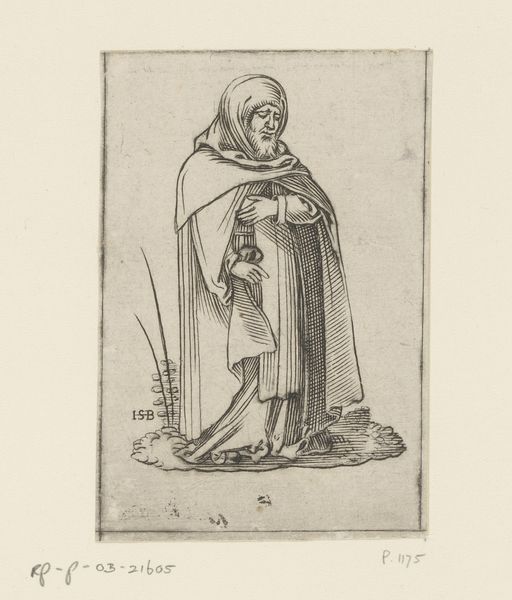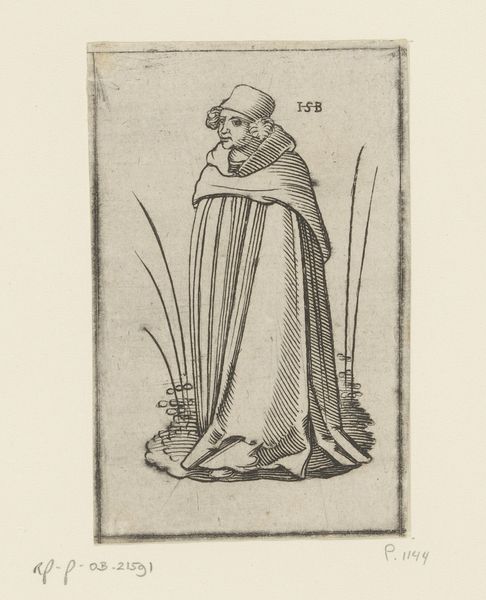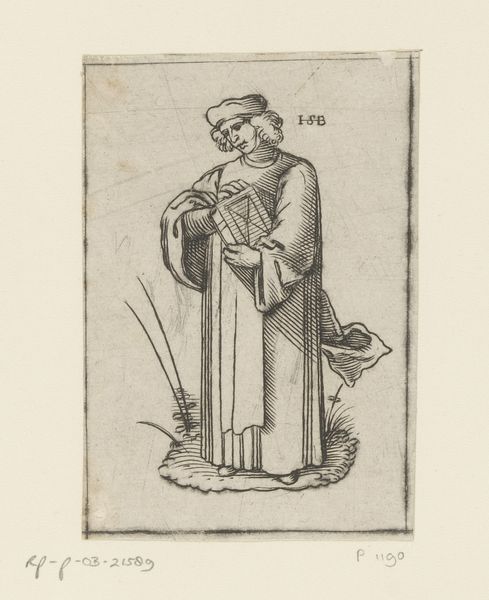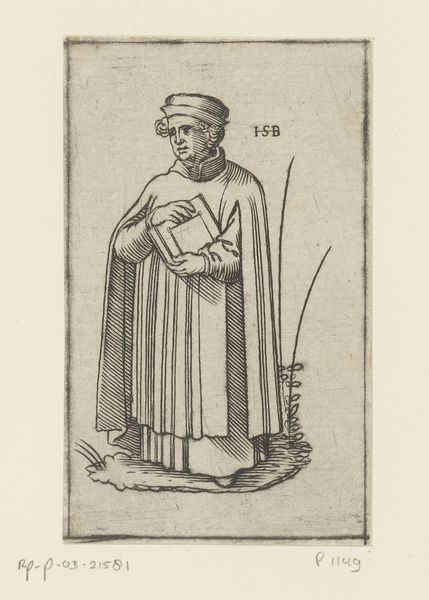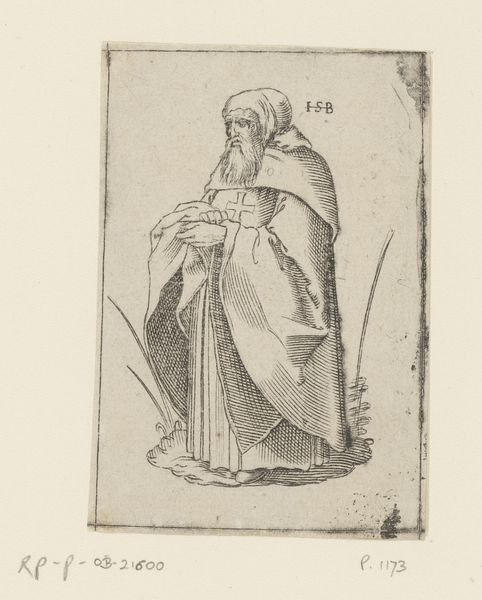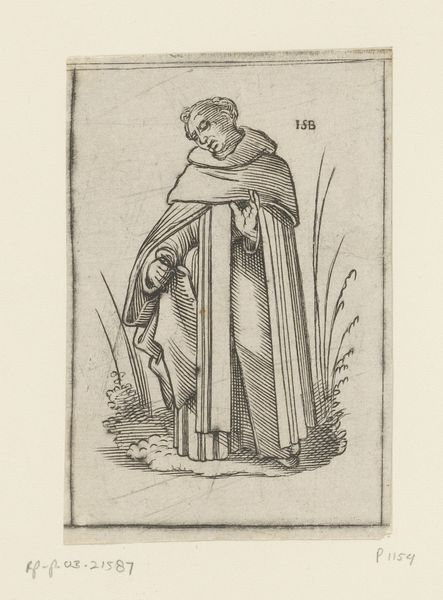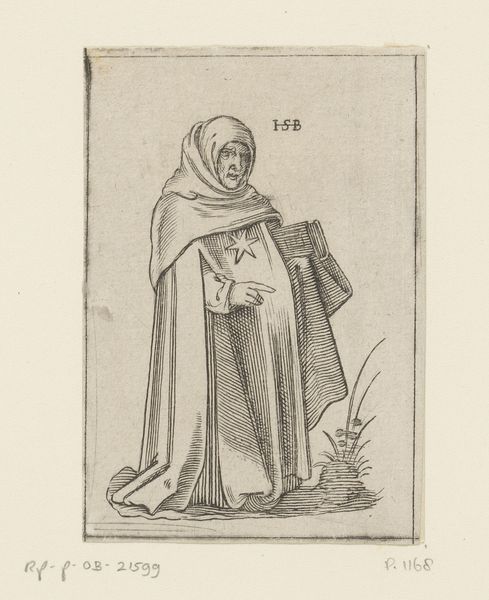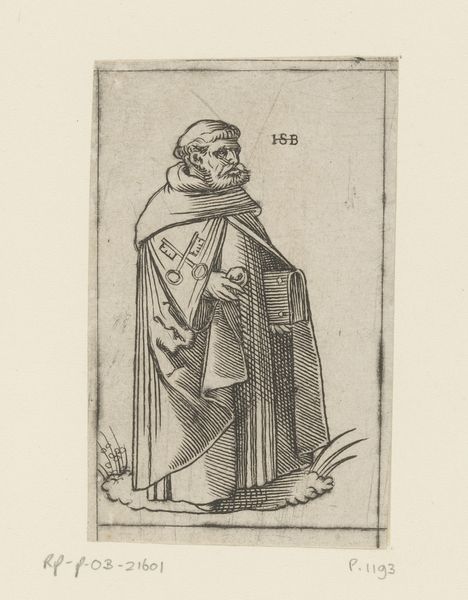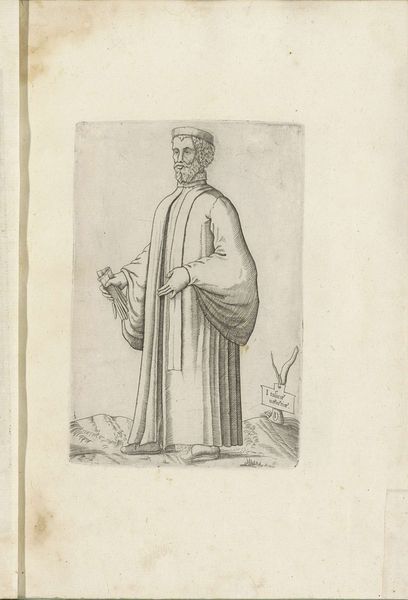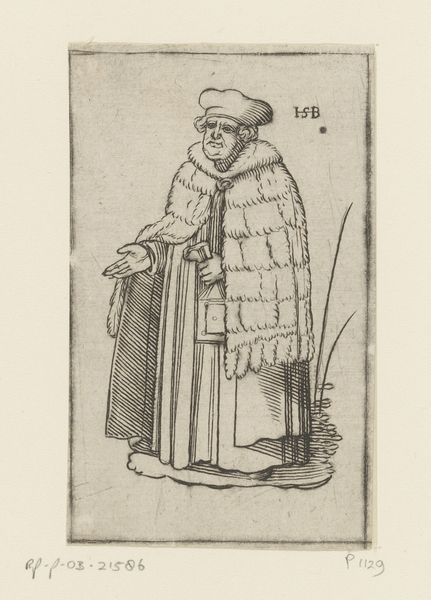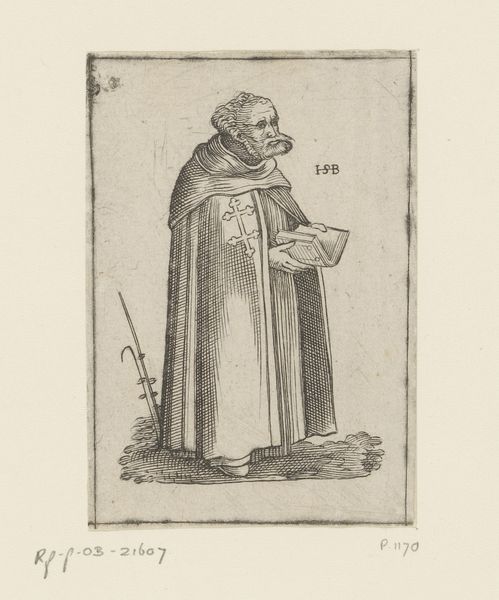
print, engraving
#
portrait
# print
#
figuration
#
11_renaissance
#
engraving
Dimensions: height 99 mm, width 71 mm
Copyright: Rijks Museum: Open Domain
Editor: Here we have an engraving from after 1526, "Monnik van de orde der Ambrosianen," or "Monk of the Ambrosian Order," by an anonymous artist, currently residing in the Rijksmuseum. There's a stern quality to the monk's gaze and pointed finger, it’s almost confrontational. What historical elements am I overlooking that might add meaning? Curator: Good observation. Let’s unpack this figure’s presence and his visual command. Considering the social and religious upheavals of the Reformation era, think about what it meant to depict a member of a religious order. How does this portrayal intersect with evolving ideas about power and religious authority at the time? Editor: That’s interesting. So, rather than just a portrait, this could be seen as a statement about religious figures and their roles in society during that time of change? Curator: Precisely! Notice his direct gaze, the book he holds. Consider them as assertions of knowledge and direction in a world that was actively questioning established religious dogma. What might his ambiguous location, almost floating amidst the sparsely detailed engraving, suggest about the Church’s standing? Editor: Maybe it reflects a sense of uncertainty, the Church trying to find its place amid shifting social tides? I hadn’t thought of it that way. Thank you. Curator: Considering visual elements alongside historical context truly enriches our understanding, doesn’t it? We unveil dialogues that go beyond the surface of the work itself. Editor: Absolutely, now I see this as far more than just a portrait; it's a lens into the Reformation period itself!
Comments
No comments
Be the first to comment and join the conversation on the ultimate creative platform.
